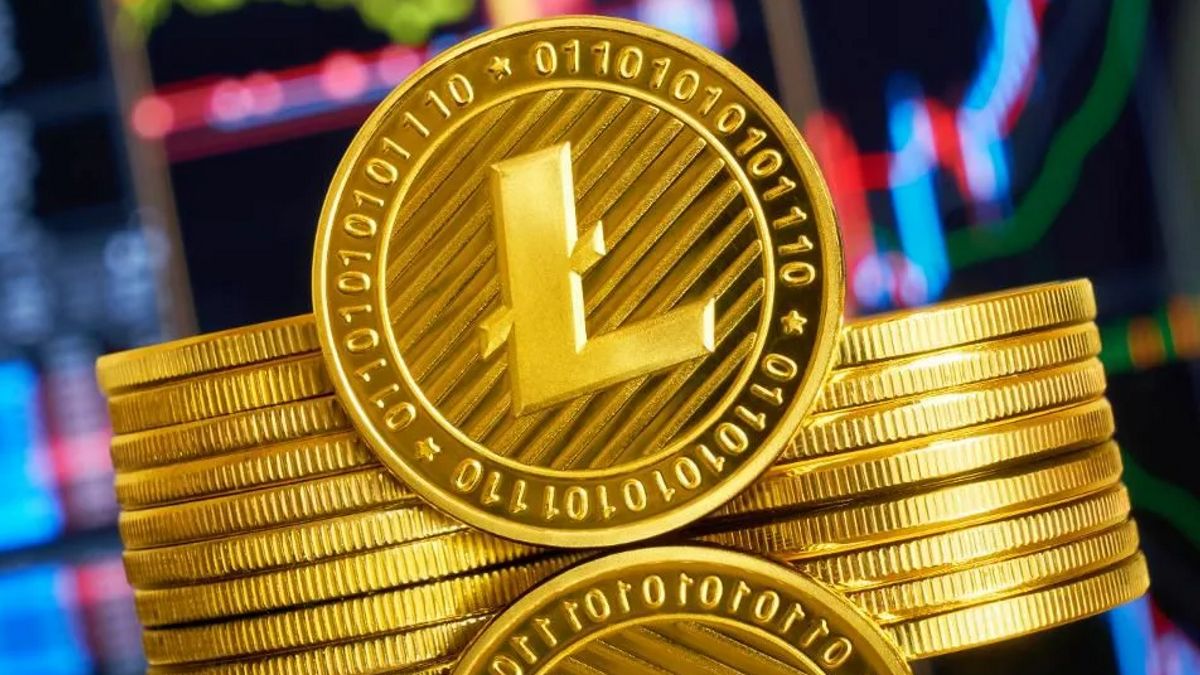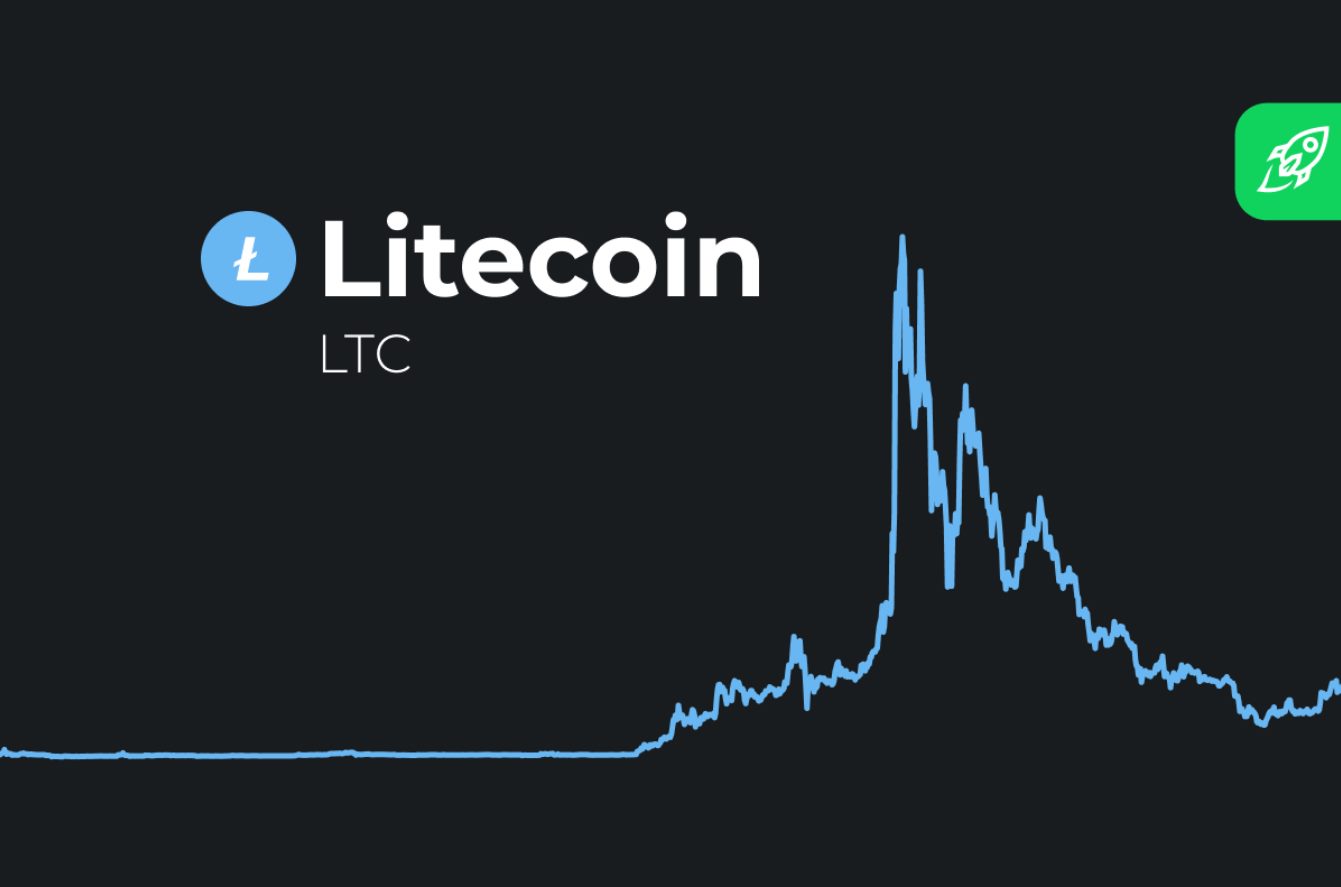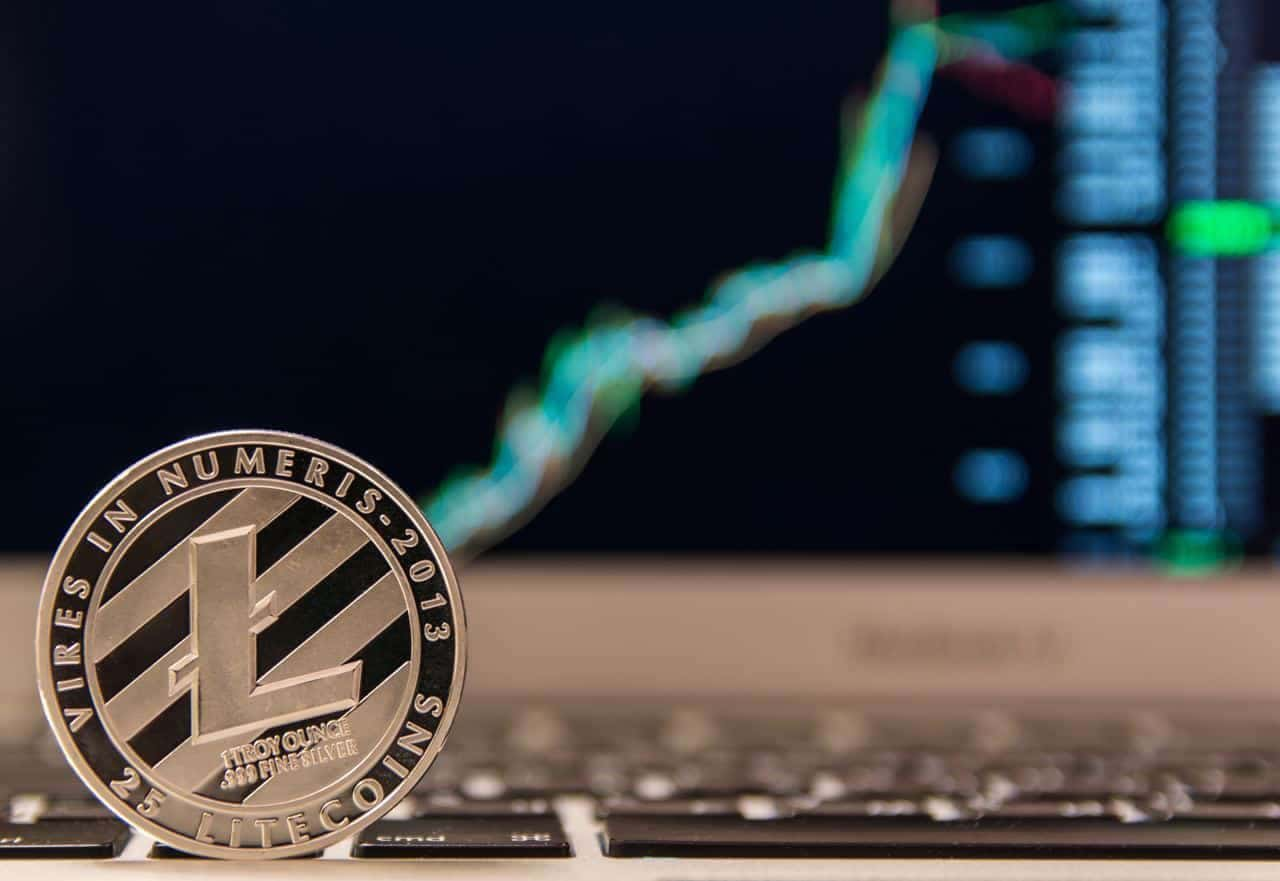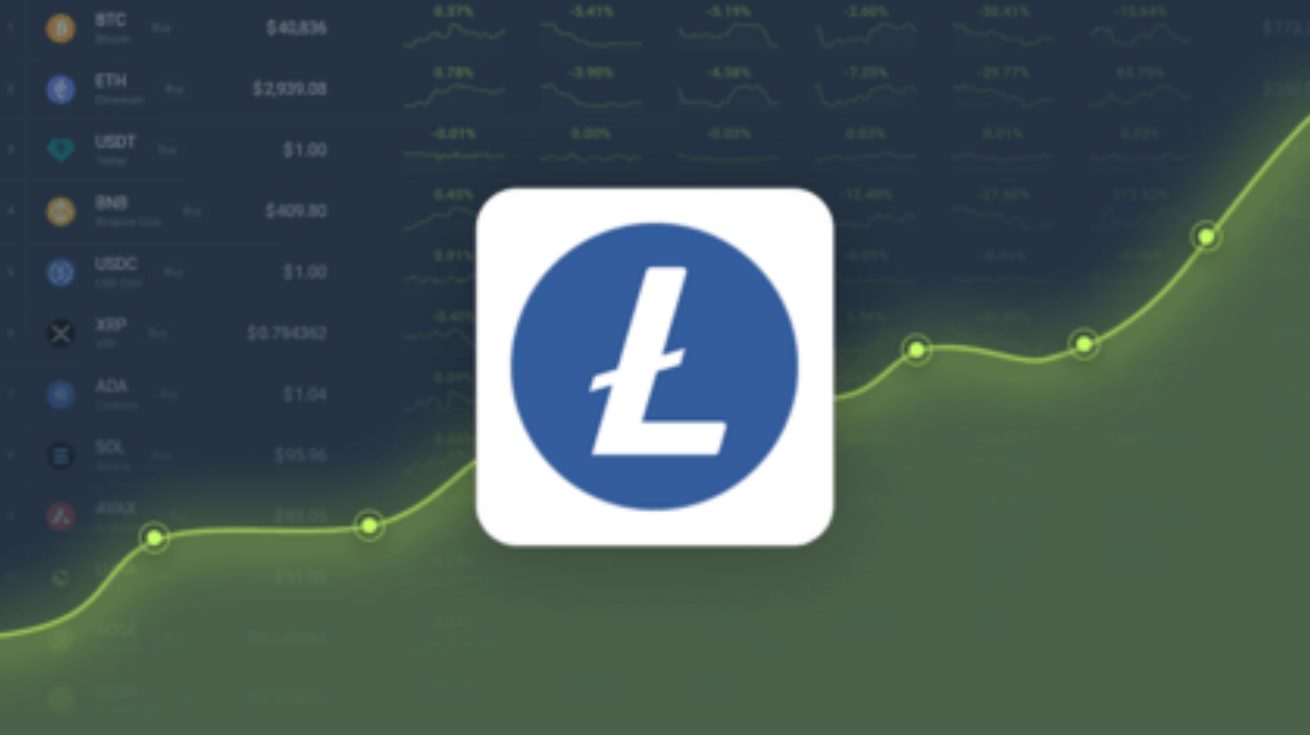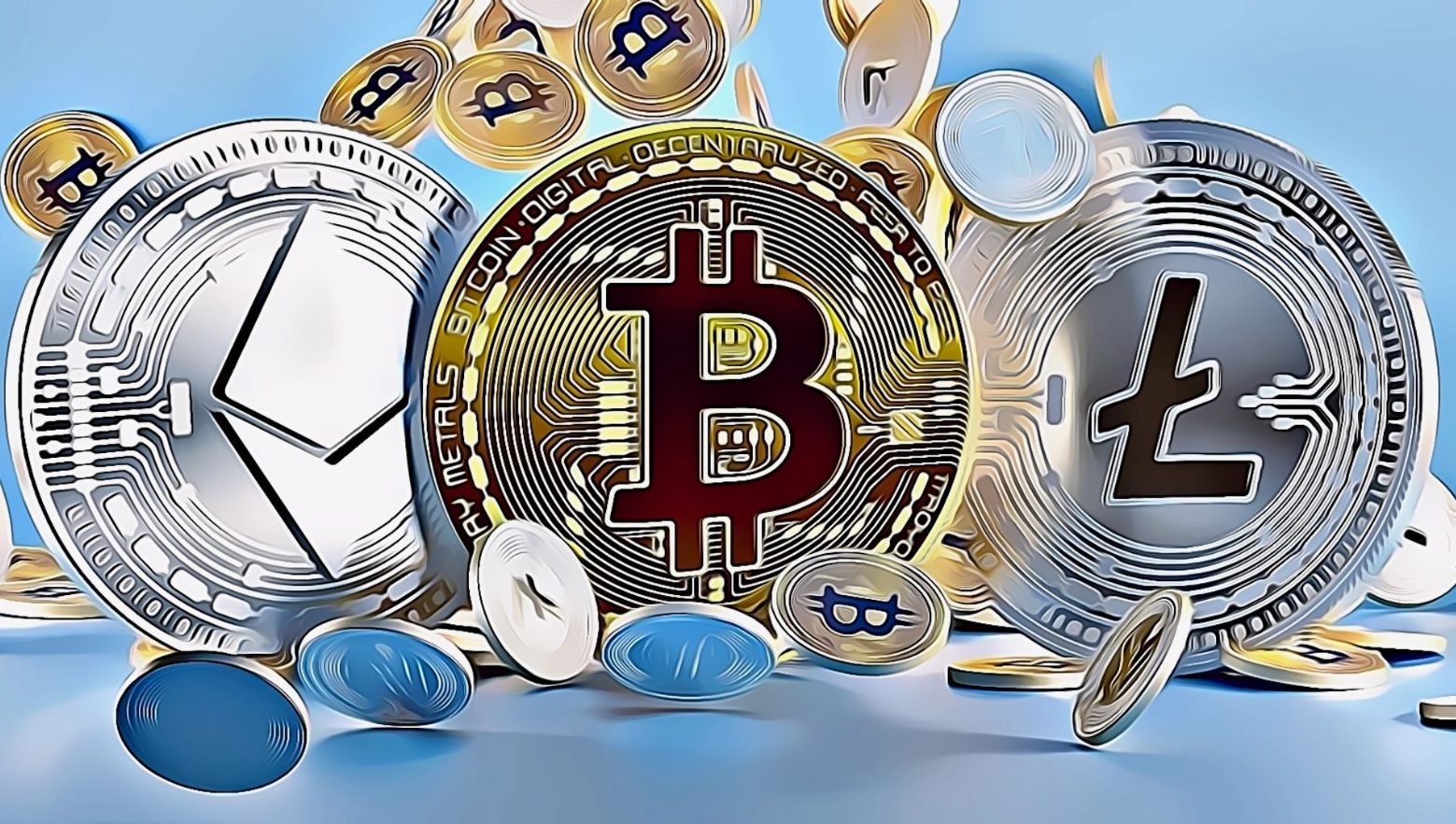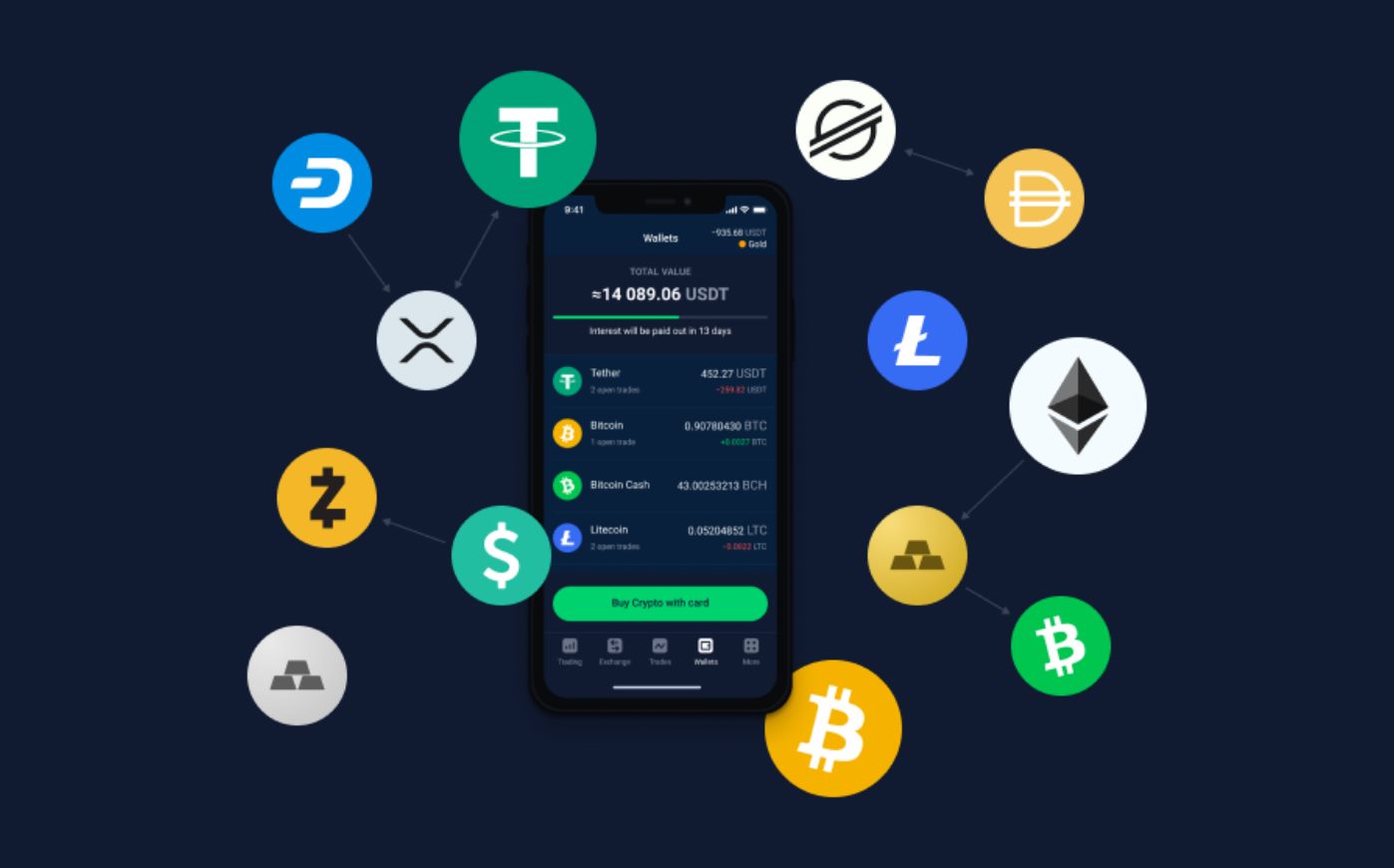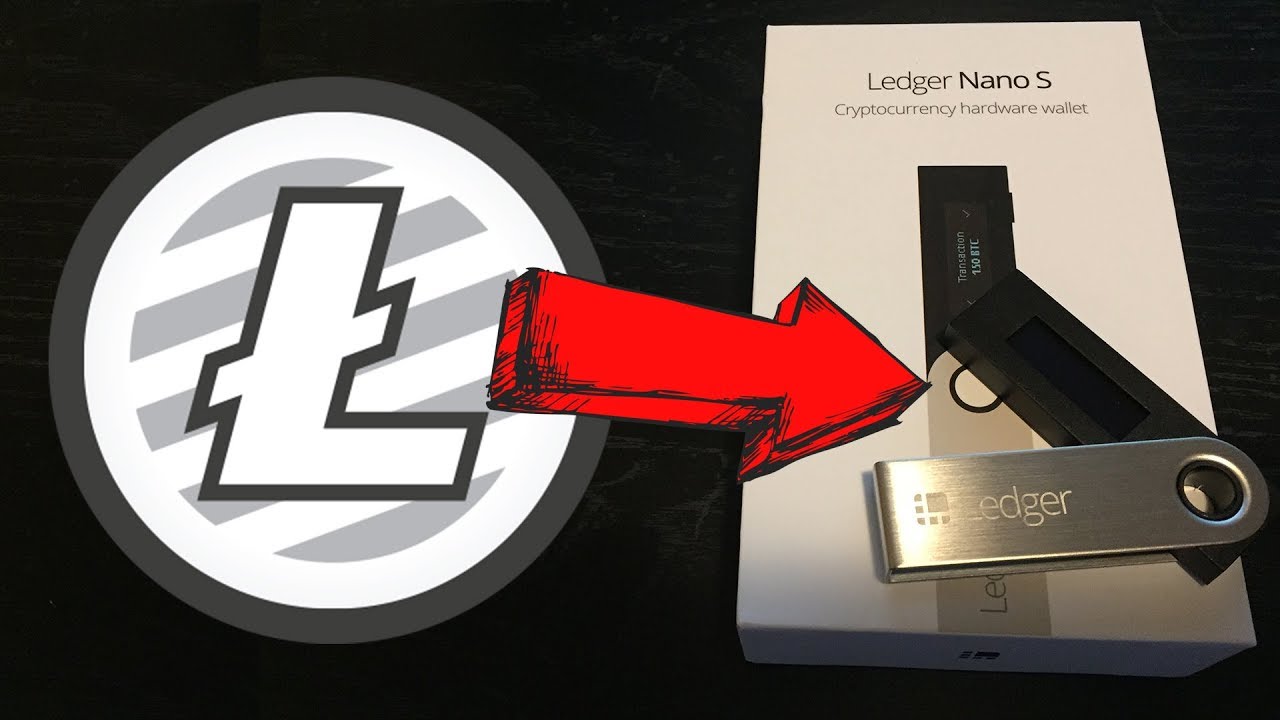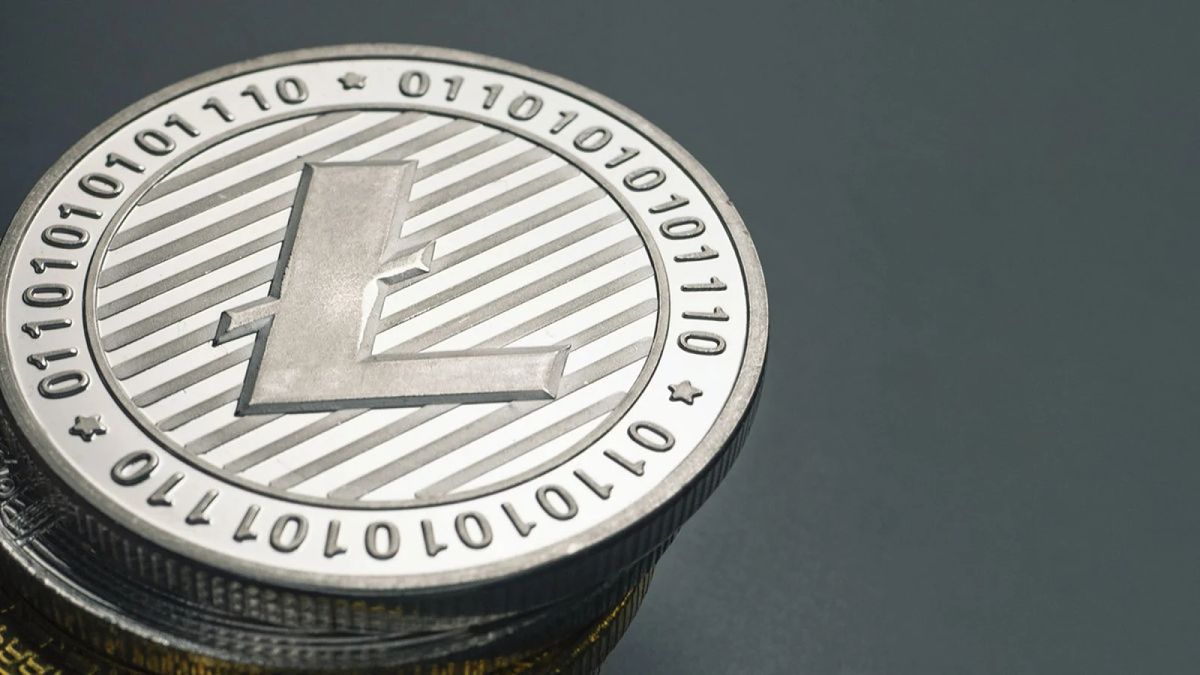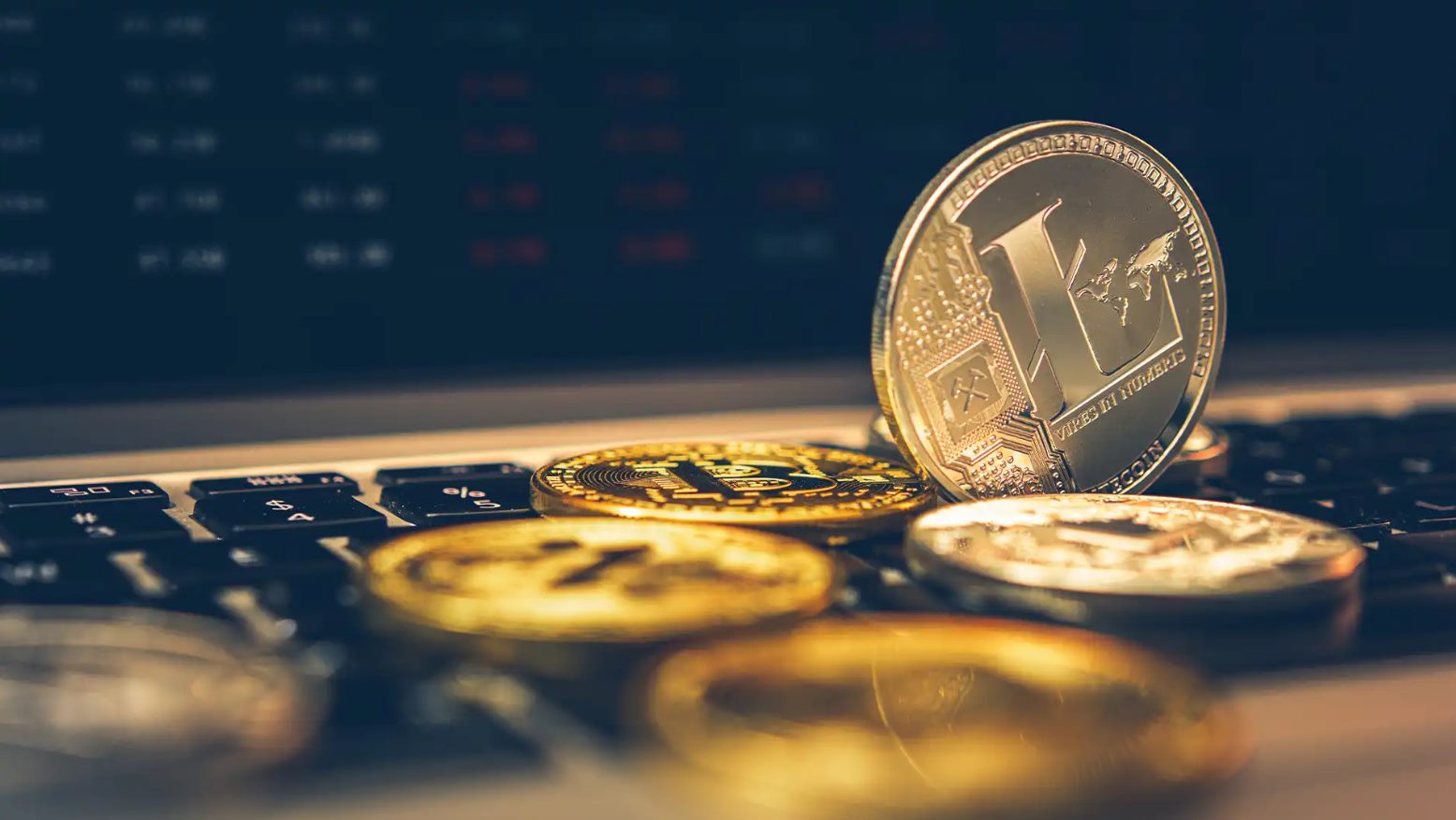Introduction
Welcome to the world of cryptocurrency, where innovation and digital revolution continually reshape the financial landscape. Among the various cryptocurrencies that have emerged, Litecoin stands out as one of the most popular and established alternatives to Bitcoin. In this article, we will explore what Litecoin is and why it has garnered significant attention from investors and enthusiasts alike.
Litecoin, often referred to as the “silver to Bitcoin’s gold,” was created in 2011 by Charlie Lee, a former Google engineer. Inspired by Bitcoin’s success, Lee aimed to develop a digital currency with improved speed and efficiency. Since its inception, Litecoin has gained traction as a reliable and accessible cryptocurrency.
At its core, Litecoin operates on a decentralized network using blockchain technology. It allows for secure and transparent transactions without the need for intermediaries, such as banks or governments. Its primary objective is to provide a faster and more scalable alternative to Bitcoin, addressing some of the limitations associated with the pioneering cryptocurrency.
Litecoin has gained popularity due to its key features, which include faster block generation time and a different hashing algorithm. These features contribute to quicker transaction confirmation and increased resistance to mining centralization. This has attracted users who value the efficiency and speed of transactions, making Litecoin a viable option for everyday transactions.
While Bitcoin remains the dominant force in the cryptocurrency market, Litecoin has carved out its own niche and established itself as a reliable digital currency. Its market capitalization and adoption have steadily grown, with a large and active community backing the development and promotion of Litecoin.
Throughout this article, we will delve into the history, technical aspects, and practical applications of Litecoin. By understanding the fundamentals of Litecoin, you will gain a comprehensive perspective on this digital asset and discover its potential for future growth and innovation.
What is Litecoin?
Litecoin is a peer-to-peer digital currency that operates on a decentralized network known as a blockchain. Created in 2011 by Charlie Lee, a former Google engineer, Litecoin was designed to be a faster and more scalable alternative to Bitcoin.
Similar to Bitcoin, Litecoin allows users to make secure and transparent transactions without the need for intermediaries. It uses cryptographic techniques to verify and record transactions on the blockchain, ensuring the integrity and security of the network.
One of the key differences between Litecoin and Bitcoin is the block generation time. While Bitcoin blocks are generated approximately every 10 minutes, Litecoin blocks are generated every 2.5 minutes. This faster block generation time allows for quicker transaction confirmation, enabling users to complete transactions more efficiently.
Another distinguishing feature of Litecoin is its hashing algorithm. While Bitcoin uses the SHA-256 algorithm, Litecoin utilizes Scrypt. This algorithm was chosen to provide increased resistance to mining centralization, as it requires more memory-intensive calculations.
Litecoin has a limited supply of 84 million coins, four times greater than Bitcoin’s 21 million. This larger supply ensures that Litecoin remains more accessible and affordable for everyday transactions, as the price per coin generally remains lower than that of Bitcoin.
Since its inception, Litecoin has gained significant recognition and adoption. It is supported by various cryptocurrency exchanges and wallets, making it easy for users to buy, sell, and store their Litecoin securely. Many merchants also accept Litecoin as a form of payment, further enhancing its practicality in real-world scenarios.
Litecoin has been successful in establishing itself as a credible and reliable digital currency. It has a strong community backing, with developers continuously working on enhancing its features and expanding its use cases. The Litecoin Foundation, a non-profit organization, is dedicated to promoting and developing Litecoin as a global peer-to-peer currency.
In summary, Litecoin is a peer-to-peer digital currency that offers faster transaction times and increased scalability compared to Bitcoin. It operates on a decentralized network and provides a secure and transparent platform for users to conduct transactions. With its unique features and growing adoption, Litecoin is positioning itself as a viable and practical alternative to traditional fiat currencies.
History of Litecoin
The history of Litecoin dates back to 2011 when it was created by Charlie Lee, a former Google engineer. Inspired by Bitcoin’s success, Lee set out to develop a digital currency that addressed some of Bitcoin’s limitations and offered improved speed and efficiency.
On October 7, 2011, Litecoin was released to the public via an open-source client on GitHub. It gained immediate attention and adoption due to its potential as a viable alternative to Bitcoin. In its early days, Litecoin faced skepticism and uncertainty, as many believed that Bitcoin would dominate the cryptocurrency market.
However, as time passed, Litecoin began to gain traction and establish itself as a reliable digital currency. In November 2013, it reached a market capitalization of $1 billion, a significant milestone that solidified its presence in the cryptocurrency ecosystem.
One key factor that contributed to Litecoin’s growth was the implementation of Segregated Witness (SegWit) in May 2017. SegWit is a protocol upgrade that improves the efficiency of transactions and enhances the scalability of the network. This upgrade strengthened Litecoin’s position as a practical and technologically advanced cryptocurrency.
Over the years, Litecoin has undergone several developments and upgrades, each aimed at enhancing its features and improving its user experience. In February 2018, the developers implemented the Lightning Network on the Litecoin network. The Lightning Network is a layer-two solution that allows for faster and cheaper transactions by utilizing off-chain channels.
Litecoin has also been at the forefront of adopting new technologies and exploring potential partnerships. In April 2019, Litecoin became the first major cryptocurrency to integrate with Beam, a privacy-focused blockchain project. This partnership aimed to enhance the privacy features of Litecoin while maintaining its speed and efficiency.
In recent years, Litecoin has continued to evolve and adapt to the changing landscape of the cryptocurrency market. It has gained increased recognition and acceptance as a form of payment, with numerous merchants and online platforms now supporting Litecoin transactions.
Looking into the future, Litecoin aims to further expand its capabilities and increase its adoption. The Litecoin Foundation, a non-profit organization, plays a vital role in supporting the development and promotion of Litecoin. It funds key projects, conducts research, and facilitates partnerships to ensure the continued growth and success of Litecoin.
In summary, the history of Litecoin showcases its journey from a mere Bitcoin alternative to a well-established and trusted digital currency. Despite initial skepticism, Litecoin has proven its value and has become a thriving cryptocurrency with a dedicated community and continuous development efforts.
How does Litecoin work?
Litecoin operates on a decentralized network using blockchain technology, similar to other cryptocurrencies like Bitcoin. It utilizes a peer-to-peer network, which means that transactions are directly conducted between users without the need for intermediaries.
At the core of Litecoin’s functionality is its blockchain, a public ledger that records and verifies all transactions. When a user initiates a transaction, it is broadcasted to a network of computers known as nodes. These nodes validate the transaction and add it to a block, which is then added to the blockchain.
To ensure the security and integrity of the network, Litecoin utilizes cryptographic techniques. The transactions are encrypted using advanced algorithms, making it virtually impossible for unauthorized parties to tamper with or alter the transaction data.
Litecoin’s blockchain consists of a series of blocks, with each block containing a set of transactions. Unlike Bitcoin, which has a block generation time of 10 minutes, Litecoin generates blocks approximately every 2.5 minutes. This faster block generation time allows for quicker transaction confirmations and a more efficient user experience.
Litecoin also employs a different hashing algorithm called Scrypt. This algorithm is designed to be more memory-intensive, making it resistant to mining centralization. The Scrypt algorithm requires miners to use a significant amount of memory to solve complex mathematical problems, which prevents the dominance of specialized mining hardware.
One of the benefits of Litecoin is its ability to handle a larger number of transactions. The faster block generation time and the Scrypt algorithm allow for a greater volume of transactions to be processed compared to Bitcoin, which helps to alleviate congestion on the network.
Another key aspect of Litecoin’s functionality is its focus on accessibility. With a total supply of 84 million coins, four times greater than Bitcoin’s supply, Litecoin aims to be more affordable and accessible for everyday transactions. The larger supply also helps to mitigate potential issues with scarcity and price fluctuations.
Litecoin wallets play a crucial role in facilitating the storage and management of Litecoin. Users can choose from a variety of wallet options, including software wallets, hardware wallets, and online wallets. These wallets enable users to securely store their Litecoins and manage their transactions.
In summary, Litecoin operates on a decentralized network using blockchain technology. It utilizes a faster block generation time, a different hashing algorithm, and a larger coin supply compared to Bitcoin. These features contribute to quicker transaction confirmations, increased scalability, and enhanced accessibility. By understanding how Litecoin works, users can appreciate the practicality and potential of this digital currency.
Key features of Litecoin
Litecoin offers several key features that contribute to its unique position in the cryptocurrency market. These features differentiate Litecoin from other digital currencies and make it an attractive option for users looking for fast and efficient transactions.
1. Faster block generation time: One of the standout features of Litecoin is its shorter block generation time. While Bitcoin generates a new block every 10 minutes, Litecoin generates one every 2.5 minutes. This faster block time allows for quicker transaction confirmations, enabling users to complete transactions more efficiently.
2. Scrypt hashing algorithm: Litecoin utilizes the Scrypt hashing algorithm, which differs from Bitcoin’s SHA-256 algorithm. The Scrypt algorithm requires miners to use more memory-intensive calculations, making it resistant to mining centralization. This ensures a more distributed mining network and prevents the dominance of specialized mining hardware.
3. Larger coin supply: Litecoin has a maximum coin supply of 84 million, which is four times greater than Bitcoin’s 21 million. This larger supply ensures that Litecoin remains more accessible and affordable for everyday transactions. The higher coin supply also contributes to mitigating price volatility that can result from limited supply.
4. Active development and community: Litecoin has a dedicated community of developers and enthusiasts working on improving and promoting the currency. The Litecoin Foundation, a non-profit organization, plays a key role in supporting development efforts and funding important projects. The active community ensures that Litecoin remains innovative and up-to-date with emerging technologies.
5. Compatibility with existing infrastructure: Litecoin is compatible with many existing Bitcoin infrastructure and services. Due to its similarities with Bitcoin, many cryptocurrency wallets, exchanges, and merchant platforms that support Bitcoin also support Litecoin. This compatibility allows for seamless integration of Litecoin into the existing cryptocurrency ecosystem.
6. Inflationary monetary policy: Unlike Bitcoin, which has a deflationary monetary policy due to its limited supply, Litecoin has an inflationary policy. Litecoins are continuously released into circulation until the maximum supply of 84 million coins is reached. This inflationary policy helps to provide ongoing incentives for miners and ensures a more sustainable ecosystem.
These key features make Litecoin a compelling digital currency for users and businesses seeking fast, secure, and affordable transactions. Whether used for day-to-day purchases, cross-border transfers, or as a store of value, Litecoin offers a reliable and efficient platform for conducting transactions in the digital world.
Differences between Litecoin and Bitcoin
Litecoin and Bitcoin, as two prominent cryptocurrencies, share similarities in their underlying technology and purpose. However, there are significant differences between the two that set them apart in terms of functionality and features.
1. Block generation time: One of the notable differences is the block generation time. Bitcoin generates a new block approximately every 10 minutes, while Litecoin generates a block every 2.5 minutes. The faster block generation time of Litecoin allows for quicker transaction confirmations, making it more suitable for day-to-day transactions.
2. Hashing algorithm: Another key distinction lies in the hashing algorithms used. Bitcoin employs the SHA-256 algorithm, whereas Litecoin utilizes the Scrypt algorithm. The Scrypt algorithm requires more memory-intensive calculations, offering increased resistance to mining centralization and a more level playing field for miners.
3. Total coin supply: Litecoin has a maximum coin supply of 84 million, four times larger than Bitcoin’s supply of 21 million. This larger supply ensures that Litecoin remains more accessible and affordable for everyday transactions. Additionally, the higher coin supply of Litecoin helps mitigate potential issues with scarcity and price volatility.
4. Market value: Bitcoin holds the distinction of being the first and most well-known cryptocurrency, resulting in a higher market capitalization and wider adoption compared to Litecoin. Bitcoin’s dominance in the cryptocurrency market often leads to more significant price fluctuations and increased media attention.
5. Community and development: Both Bitcoin and Litecoin have dedicated communities and active development teams. However, the development communities have slightly different focuses. Bitcoin primarily focuses on solving scalability issues, while Litecoin aims to provide faster transaction times and improved efficiency as a “silver to Bitcoin’s gold.”
6. Use case: Bitcoin is often seen as a store of value and a potential digital substitute for traditional currencies. It has gained recognition as a hedge against inflation and a speculative investment. On the other hand, Litecoin is frequently used for day-to-day transactions, thanks to its faster block generation time and lower transaction fees.
Despite these differences, Litecoin and Bitcoin are interoperable to some extent since they share the same core technology. Litecoin wallet addresses are compatible with Bitcoin wallets, and both can be exchanged on various cryptocurrency exchanges.
It’s important to note that while Litecoin has carved out its own niche and offers unique advantages, Bitcoin remains the most widely recognized and dominant cryptocurrency. Investors and users should consider their specific needs and objectives to determine which cryptocurrency aligns best with their goals.
Mining Litecoin
Mining is an essential process for securing and validating transactions in the Litecoin network. It involves using computational power to solve complex mathematical problems, which in turn adds new blocks to the blockchain.
Litecoin mining utilizes a proof-of-work (PoW) consensus algorithm, similar to Bitcoin. The process of mining Litecoin involves miners competing to find a solution to a cryptographic puzzle. The first miner to solve the puzzle is rewarded with a certain amount of Litecoins and the right to add a new block to the blockchain.
One of the key differences between Bitcoin and Litecoin mining lies in the hashing algorithm. While Bitcoin uses the SHA-256 algorithm, Litecoin utilizes the Scrypt algorithm. The Scrypt algorithm requires more memory-intensive computations, which makes it more resistant to specialized mining hardware and encourages a more distributed mining network.
Mining Litecoin requires specialized hardware known as Application-Specific Integrated Circuit (ASIC) miners. These ASIC miners are specifically designed to handle the memory requirements of the Scrypt algorithm. However, due to the more memory-intensive nature of Scrypt, it is still viable for individual miners to use general-purpose computers, such as CPUs and GPUs, to mine Litecoin profitably.
The mining process begins with miners collecting transactions and organizing them into a block. Miners then use their computational power to solve the Scrypt puzzle, which involves finding a hash with certain predetermined properties. This process requires significant computational resources and consumes a considerable amount of electricity.
Once a miner finds a solution to the puzzle, they broadcast the new block to the network for validation. Other nodes in the network verify the validity of the block and its transactions according to the consensus rules. If the block is accepted by the network, the miner is rewarded with a certain number of newly minted Litecoins, along with any transaction fees associated with the transactions in the block.
As the Litecoin network grows and the number of miners increases, the difficulty of the mining puzzle adjusts to maintain a consistent block generation time of approximately 2.5 minutes. This adjustment ensures that new blocks are added to the blockchain at a steady pace, avoiding congestions or delays in transaction confirmations.
In recent years, mining pools have become popular among Litecoin miners. Mining pools allow multiple miners to combine their computational power and increase their chances of mining a new block. Any rewards obtained by the pool are distributed among the participants based on their contribution.
It’s worth noting that as Litecoin adoption and mining activity increase, the mining rewards decrease over time due to a halving event. Approximately every four years, the block reward is halved, reducing the number of newly minted Litecoins that are rewarded to miners. This mechanism helps to control inflation and ensure the limited supply of Litecoin is gradually released into circulation.
In summary, mining is an essential process for validating and adding new blocks to the Litecoin blockchain. It involves solving complex mathematical puzzles using computational power. The Scrypt algorithm and the memory-intensive nature of Litecoin mining provide a more accessible and democratic mining environment. As the network grows and evolves, miners continue to play a vital role in securing and supporting the Litecoin ecosystem.
Price and Value of Litecoin
The price and value of Litecoin, like any other cryptocurrency, is determined by various factors and can experience significant volatility. Understanding these factors can provide insight into the potential growth and risks associated with investing in Litecoin.
LTC, the ticker symbol for Litecoin, is traded on various cryptocurrency exchanges, where its price is determined by supply and demand dynamics. Factors that can influence the price include market sentiment, investor speculation, technological advancements, regulatory developments, macroeconomic conditions, and overall market trends.
Similar to Bitcoin, Litecoin’s price movements can be influenced by news events, such as adoption by major companies or regulatory announcements. Positive news and increased adoption often lead to heightened demand, which can drive up the price. Conversely, negative news or regulatory uncertainty may lead to a decline in price due to market sell-offs and decreased investor confidence.
Litecoin’s value is derived from its utility as a digital currency and its potential as a store of value. It offers faster transaction times and lower fees compared to Bitcoin, which makes it attractive for individuals looking for efficiency in daily transactions.
Litecoin’s growing acceptance as a form of payment by merchants and online platforms also contributes to its value. The more widely accepted and used a cryptocurrency is, the greater its usefulness and value within the broader economy.
As with any investment, it’s important to consider the risks associated with the price volatility of cryptocurrencies. The price of Litecoin can experience significant fluctuations over short periods, leading to potential gains or losses. It is advisable to approach cryptocurrency investment with a long-term perspective and to only invest what you can afford to lose.
Some investors also view Litecoin as a potential store of value similar to gold. They see its limited supply and growing recognition as a digital asset that can potentially hold value over time. This aspect of Litecoin’s value can appeal to those seeking an alternative investment or a hedge against traditional fiat currencies.
Keep in mind that the cryptocurrency market is highly speculative and subject to manipulation, as well as other risks such as technological vulnerabilities and regulatory changes. It is essential to conduct thorough research, monitor market trends, and seek professional financial advice when considering investing in Litecoin or any other cryptocurrency.
In summary, the price and value of Litecoin are influenced by a combination of factors, including supply and demand dynamics, market sentiment, technological advancements, news events, and overall market trends. Litecoin’s value is derived from its utility as a digital currency and its potential as a store of value. However, investors should be aware of the volatility and risks associated with cryptocurrency investments.
How to Buy and Store Litecoin
If you’re interested in buying and storing Litecoin, you’ll need to follow a few steps to get started. Here’s a guide on how to buy and store Litecoin securely:
1. Choose a cryptocurrency exchange: Select a reputable cryptocurrency exchange that supports Litecoin. Popular exchanges like Coinbase, Binance, and Kraken offer Litecoin trading pairs. Create an account on the chosen exchange and complete any necessary verification processes.
2. Deposit funds: Once your account is set up, deposit funds into your exchange wallet. Most exchanges offer various funding methods, such as bank transfers, debit/credit cards, or other cryptocurrencies. Ensure you follow the specific instructions provided by the chosen exchange.
3. Place a buy order: Once your funds are deposited, navigate to the trading section of the exchange and place a buy order for Litecoin. Specify the amount of Litecoin you wish to purchase, review the transaction details, and confirm the purchase.
4. Set up a secure wallet: It is highly recommended to store your Litecoin in a secure wallet, rather than leaving them on the exchange. There are different types of wallets available, including software wallets, hardware wallets, and paper wallets. Research and choose the type that best suits your needs.
5. Software wallets: Software wallets can be downloaded and installed on your computer or mobile device. Examples of popular software wallets that support Litecoin include Electrum, LoafWallet, and Exodus. Make sure to follow best security practices, such as enabling two-factor authentication and keeping your wallet software up to date.
6. Hardware wallets: Hardware wallets, like Ledger and Trezor, provide an additional layer of security by storing your Litecoin offline. These physical devices generate and store your private keys away from potentially vulnerable internet-connected devices.
7. Paper wallets: Paper wallets involve generating a Litecoin address and storing the corresponding private key on a physical piece of paper. This method keeps your funds offline and can be a good option for long-term storage. Exercise caution and ensure that you create and store your paper wallet in a secure environment.
8. Withdraw your Litecoin: If you purchased Litecoin on an exchange, initiate a withdrawal to your secure wallet. Enter the wallet address provided by your software, hardware, or paper wallet, specify the amount you want to withdraw, and confirm the transaction. This ensures that you have full control and ownership of your Litecoin.
9. Regularly update your software: Whether using a software or hardware wallet, it is crucial to stay updated with the latest wallet software or firmware versions. Updates often include important security enhancements and bug fixes.
Remember to exercise caution when storing and accessing your Litecoin. Keep your private keys secure and consider using additional security measures, such as passphrase encryption or multisig wallets, for added protection against unauthorized access.
In summary, buying and storing Litecoin involves selecting a reputable cryptocurrency exchange, purchasing Litecoin, and securely storing it in a wallet. Choose a secure wallet option that suits your needs, whether that’s a software wallet, hardware wallet, or paper wallet. By following best practices and keeping your private keys safe, you can ensure the security of your Litecoin investment.
Use Cases for Litecoin
Litecoin, with its fast transaction times, low fees, and growing acceptance as a digital currency, has found various use cases across different industries. Here are some of the key use cases for Litecoin:
1. Peer-to-peer transactions: Litecoin’s primary use case is as a digital currency for peer-to-peer transactions. Its faster block generation time and lower fees make it suitable for everyday transactions such as purchasing goods and services. Businesses and individuals can use Litecoin to send and receive funds quickly and securely.
2. Cross-border transactions: Litecoin’s global accessibility and fast transaction confirmations make it a practical choice for cross-border transactions. Rather than dealing with the delays and high fees of traditional payment systems, individuals and businesses can use Litecoin to send and receive funds across borders efficiently and at a lower cost.
3. Micropayments: Due to its low transaction fees, Litecoin is well-suited for micropayments. It enables the transfer of small amounts of value in an affordable and efficient way. This makes Litecoin an ideal choice for platforms and services that involve frequent microtransactions, such as tipping services, digital content subscriptions, or in-game digital purchases.
4. Remittances: Litecoin’s fast transaction speed and low fees make it an attractive option for remittance services. Immigrants and overseas workers can use Litecoin to send money back to their home countries, bypassing traditional intermediaries and reducing the cost and time associated with remittance transactions.
5. Alternative store of value: Some investors view Litecoin as a potential store of value similar to gold or Bitcoin. They see its limited supply, ongoing development, and growing acceptance as a digital asset that may hold value over time. This use case positions Litecoin as an alternative investment to traditional assets.
6. Privacy-focused transactions: While Litecoin is not known for its privacy features, efforts have been made to enhance its privacy capabilities. Projects like Mimblewimble and Confidential Transactions are being explored to provide additional privacy and fungibility to Litecoin transactions. Privacy-focused individuals may choose to utilize these features to enhance the confidentiality of their transactions.
7. Experimental applications: Litecoin’s active and innovative community has also led to the development of experimental applications. Some developers have explored smart contract platforms, decentralized applications (dApps), and layer-two scaling solutions on the Litecoin network. These experiments highlight the potential for Litecoin to evolve beyond its main use cases and become a platform for additional functionalities.
These are just a few of the many use cases that Litecoin offers. As Litecoin gains wider adoption and developers continue to enhance its features, it is likely that more applications and industries will explore and utilize the potential of this versatile digital currency.
Conclusion
Litecoin has emerged as a prominent and reliable digital currency since its creation in 2011. It offers several key features, including faster block generation times, a unique hashing algorithm, and a larger coin supply, setting it apart from its counterparts in the cryptocurrency market.
The history of Litecoin showcases its journey from being introduced as a “silver to Bitcoin’s gold” to solidifying its position as a practical and efficient digital currency. Litecoin’s active development community and ongoing improvements ensure that it remains innovative and adaptable to the changing landscape of the cryptocurrency ecosystem.
Litecoin’s utility as a digital currency is evident in its various use cases. It enables fast and affordable peer-to-peer transactions, making it suitable for day-to-day payments and cross-border transfers. Additionally, Litecoin’s lower fees and faster transaction confirmations make it suitable for micropayments and remittance services.
As with any investment, it’s essential to consider the risks associated with cryptocurrency investing and to approach it with caution. Litecoin’s price and value can be influenced by various factors, including market sentiment, technological advancements, and overall market trends. Investors should conduct thorough research, stay informed, and seek professional advice before making any investment decisions.
Storing Litecoin securely is crucial to protect one’s investment. Utilizing secure wallets, such as software wallets, hardware wallets, or paper wallets, ensures the safety of Litecoin holdings. By following best practices and maintaining control over private keys, users can mitigate the risk of unauthorized access to their funds.
In conclusion, Litecoin has established itself as a reliable and efficient digital currency with a growing number of use cases. Its faster transaction times, low fees, and active development make it a practical option for various transactions and applications. While investing in cryptocurrencies carries inherent risks, Litecoin’s track record and unique features position it as a promising asset in the rapidly evolving world of digital currencies.







